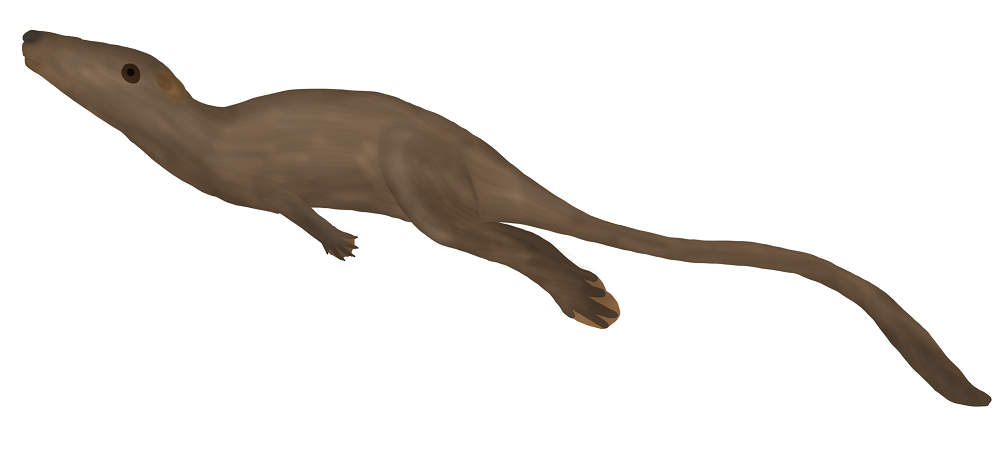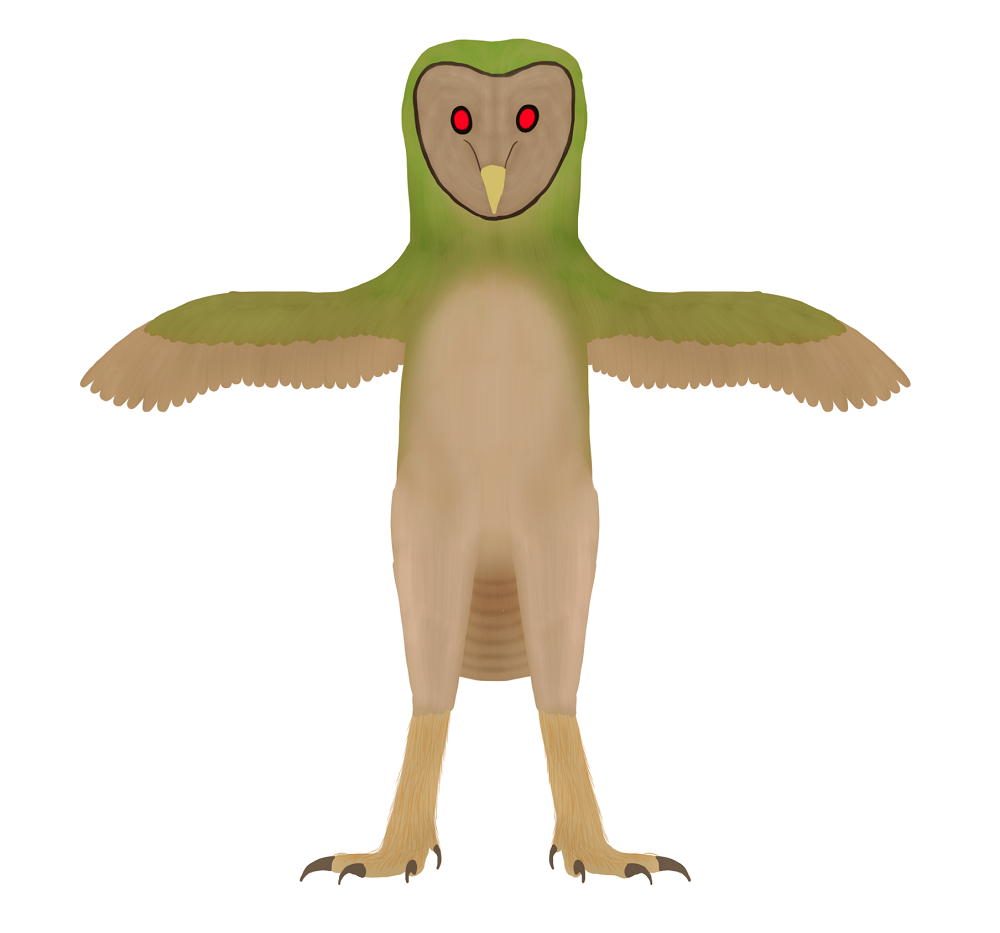
|
New Hawaiian Island
12 million years hence
The Hawaiian hotspot, the volcanic center of the Hawaiian archipelago, will remain active for many millions of yesars in the future. The continuous movement of magma to the surface has led to the eruption of more seamounts, which over time will mature into islands. The next island to surface, located to the southeast of the island of Hawai'i, originated with a seamount named Lō'ihi. Now, 12 million years in the future, it is approximately in the middle of the remaining island chain.
The tropical seas around Lō'ihi are lush with coral reefs, though these are not the same coral reefs of the Holocene; they are descended from the few deeper-sea corals that survived. Fish and squid froth around these reefs, and these are preyed upon by sharks, seabirds, and swimming mongooses. The beaches on Lō'ihi are combed by the semiaquatic wharf rats, and the rats are in turn preyed upon by flightless owls.
| Lō'ihi stolas |
Notter |
Wharf rat |
|
Click on a tab to learn more about that species.

Garciatherium margaritaphilus
In the time of humans, three species of rat had been introduced to the Hawaiian islands. Being common and adaptable, the rats managed to weather their disappearance, continuing to live off the islands’ remaining resources. 12 million years in the future, some of these rats have specialized for a new semiaquatic niche, helping them colonize newly-arisen islands in the chain. These wharf rats are the smallest marine mammals to have ever evolved.
The wharf rat has a bevy of aquatic adaptations. It has a head and body length of up to 40 cm, plus a flattened tail that doubles this length. Its hindlimbs are larger and bear webbed feet, while the arms are more often used for grasping. Its fur is short, dense, and water-repellent. Wharf rats congregate on the beaches and source most of their food from the shallow reefs just offshore, including small fish, shellfish, and crustaceans. They can hold their breath underwater for up to 3 minutes. Predators include birds and large fish.

Neoherpestes marinus
The notter is descended from Javan mongooses, which were introduced into the Hawaiian islands by humans in an attempt to control rats. It did a pretty good job of controlling populations of the rats - and native animals as well. As the supply of available food on the islands began to dwindle, and as erosion ate away at the existing islands, they turned to the sea. Now, the descendants of these mongooses are a naturalized part of the Hawaiian ecosystem.
The notter can grow over a meter long, with most of that being a laterally flattened tail. Its body is long and flexible, insulated with the very beginnings of a blubber layer. Unusually for a mammal, it swims with a side-to-side motion of its body. Notters spend most of their time in the water, hunting fish in shallow waters and at the surface of more open seas. They have been noted to make trips between islands. Although notters are largely solitary, mated pairs stick together until their offspring are weaned. Notters raise their offspring in dens on land, and the father may bring food while the mother protects the den.

Eustolas sp.
The new apex predator of the Hawaiian islands, Eustolas can grow up to 1.2 meters in height. It is too large to fly, but is an adept terrestrial predator. Unusually for an owl, its feathers have a greenish hue to them. It is randomly active through the day and night, preying on wharf rats, birds, notters, and carrion washed onto the shore. Eustolas mates for life unless one partner dies, and usually nests in higher grounds away from shore.
There have been numerous previous instances of owls growing in size and adopting terrestrial lifestyles on islands: the stilt-owls (Grallistrix), the Cuban giant owl (Ornimegalonyx), and the Andros Island barn owl (Tyto pollens). This course of evolution has occurred once more in future Hawaii, with barn owls providing the ancestral stock. There are five species of Eustolas, one for each major island in the chain, which display subtle differences in size and plumage.
|
|




